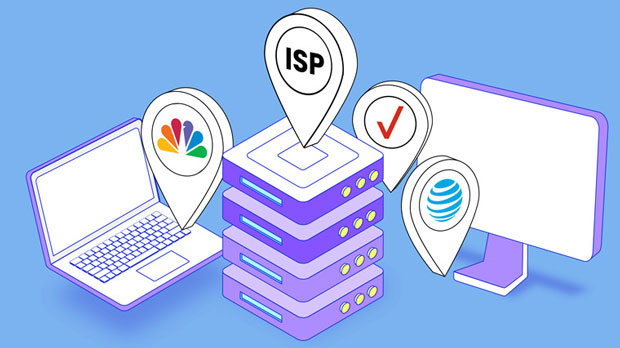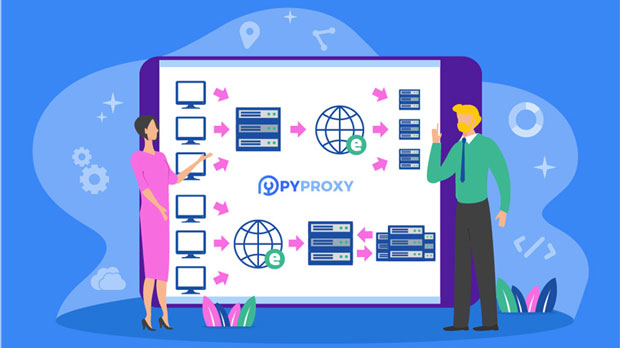socks5 proxies are widely used for enhancing online privacy, bypassing geographic restrictions, and improving internet anonymity. They act as intermediaries between users and the internet, masking the user's IP address and routing traffic through a secure server. While free SOCKS5 proxies may seem tempting due to their cost-free nature, they come with several limitations when compared to paid options. This article will explore the key differences between free and paid SOCKS5 proxies, analyzing factors such as security, speed, reliability, and user experience. Understanding these differences is crucial for individuals and businesses who rely on proxies for various internet activities. 1. Security and Privacy: The Core of Proxy UsageWhen it comes to security, SOCKS5 proxies are typically more secure than standard HTTP proxies, as they support a wider range of protocols and offer better encryption. However, the level of security between free and paid SOCKS5 proxies can vary significantly.Free SOCKS5 Proxies: Free proxies are often provided by unknown or unreliable sources, which means their security protocols are either weak or non-existent. Many free SOCKS5 proxies do not offer encryption, leaving your data vulnerable to interception or surveillance. Additionally, free services may log user data for commercial purposes or expose users to malware and other cyber threats. This compromises the very reason why users turn to proxies in the first place—privacy and anonymity.Paid SOCKS5 Proxies: Paid SOCKS5 proxies, on the other hand, generally come with stronger security features, including robust encryption, secure server infrastructure, and no-log policies. Most paid proxy services prioritize their users' privacy, offering features like IP rotation, DNS leak protection, and other mechanisms to ensure the confidentiality of your online activities. Furthermore, reliable paid proxies typically have better customer support and transparency regarding their security measures.2. Speed and Performance: How Your Internet Experience is AffectedThe speed and overall performance of a socks5 proxy can have a significant impact on your online experience, especially if you rely on proxies for activities such as gaming, streaming, or large data transfers.Free SOCKS5 Proxies: Speed is one of the biggest trade-offs when using free SOCKS5 proxies. Since these services are often overused and have limited infrastructure, free proxies are typically slow and unreliable. Many free providers have fewer servers, leading to congestion and slow connection speeds. Additionally, free proxies often come with bandwidth limitations, which can severely affect activities like streaming or downloading large files.Paid SOCKS5 Proxies: Paid SOCKS5 proxies offer faster and more stable connections due to better infrastructure and server distribution. Paid services usually have a higher server count across various locations, which reduces congestion and enhances performance. As these services are often designed to cater to commercial clients or users with high-demand needs, you can expect minimal throttling and consistent speeds. This makes paid proxies far more suitable for demanding applications like online gaming, HD streaming, and secure browsing.3. Reliability and Uptime: Importance of Consistent ServiceAnother key difference between free and paid SOCKS5 proxies is their reliability and uptime.Free SOCKS5 Proxies: Free proxies are notorious for their unreliability. Given that these services are typically funded by advertisements or donations, they may not be able to maintain consistent uptime or service quality. Free proxy servers may frequently go offline, experience frequent downtimes, or get blocked by websites and services. This makes free SOCKS5 proxies a poor choice for users who need a stable and dependable internet connection.Paid SOCKS5 Proxies: Paid SOCKS5 proxies, however, are far more reliable. Service providers typically offer guaranteed uptime (often 99.9% or higher), ensuring that the proxy remains functional most of the time. The reliability is backed by professional support teams, server monitoring, and robust infrastructure. Paid proxies also tend to be less likely to get blacklisted since they often rotate IPs and offer dedicated IP addresses, making them ideal for businesses or individuals who require uninterrupted service.4. Customer Support: The Difference in Service QualityCustomer support is a crucial element, especially when technical issues arise.Free SOCKS5 Proxies: Free proxy providers rarely offer customer support. If something goes wrong, you are left to troubleshoot the issue on your own. Additionally, free services might have limited documentation or community forums where you can seek help, which can be frustrating for users who encounter problems. If you face difficulties like server downtime or slow speeds, there is no guaranteed way to get help or resolve the issue.Paid SOCKS5 Proxies: Paid SOCKS5 proxies typically provide dedicated customer support channels, including live chat, email, or phone support. This ensures that any technical issues or queries you have are resolved promptly. Support teams are often available 24/7, which is vital for business users who depend on their proxy services to operate without interruption. Additionally, paid services often have extensive knowledge bases, FAQs, and tutorials to help users set up and optimize their proxy connections.5. Legal and Ethical Considerations: Who’s Responsible for Misuse?Using a SOCKS5 proxy can have legal and ethical implications, especially if you use it for activities like bypassing geo-blocks or conducting anonymous browsing.Free SOCKS5 Proxies: Many free SOCKS5 proxies are offered without clear terms of service or privacy policies, which can put users at risk. The providers of free proxies may not be diligent about enforcing ethical usage or monitoring illegal activity. Some free proxy services may even sell user data or engage in activities that could lead to legal issues for users. Moreover, because free services are often unregulated, there’s little accountability if the service is used for harmful or illegal purposes.Paid SOCKS5 Proxies: Paid SOCKS5 proxies tend to have clearer terms of service and a higher standard of legal and ethical responsibility. Most paid providers make it clear that their proxies should be used for legal purposes only and enforce these rules to some extent. They are also more likely to comply with local data protection laws and ensure that their users’ data is not exploited or misused. This makes paid proxies a safer and more ethical choice for users concerned about legal ramifications.6. Cost Considerations: Is It Worth Paying for a Proxy Service?Finally, cost is a major factor to consider when choosing between free and paid SOCKS5 proxies.Free SOCKS5 Proxies: Free proxies obviously come with no cost, making them an attractive option for those on a budget. However, as discussed, the trade-offs in terms of security, speed, reliability, and support may not be worth the price savings. For casual users with minimal demands, a free proxy might be sufficient, but for anyone relying on proxies for more demanding tasks, the drawbacks are likely to outweigh the financial savings.Paid SOCKS5 Proxies: Paid proxies, while requiring a monthly or annual subscription, offer substantial value for the money. For individuals and businesses that need consistent, fast, secure, and reliable connections, the cost of a paid proxy is often justified by the improved service quality. Furthermore, paying for a proxy ensures that you are getting professional support and an overall better experience. The prices for paid SOCKS5 proxies vary depending on the provider and the level of service, but for most users, the investment is well worth it.Conclusion: Weighing the Pros and ConsIn conclusion, the decision between using a free or paid SOCKS5 proxy ultimately depends on the user's needs and priorities. Free proxies may seem appealing due to their lack of cost, but they come with significant risks in terms of security, speed, and reliability. Paid SOCKS5 proxies offer a more secure, faster, and more dependable experience, along with professional support and fewer risks. For anyone who values online privacy, security, and performance, investing in a paid proxy service is usually the better choice. Ultimately, users need to evaluate their needs and budget to make an informed decision.
Jan 03, 2025
![arrow]()



















































